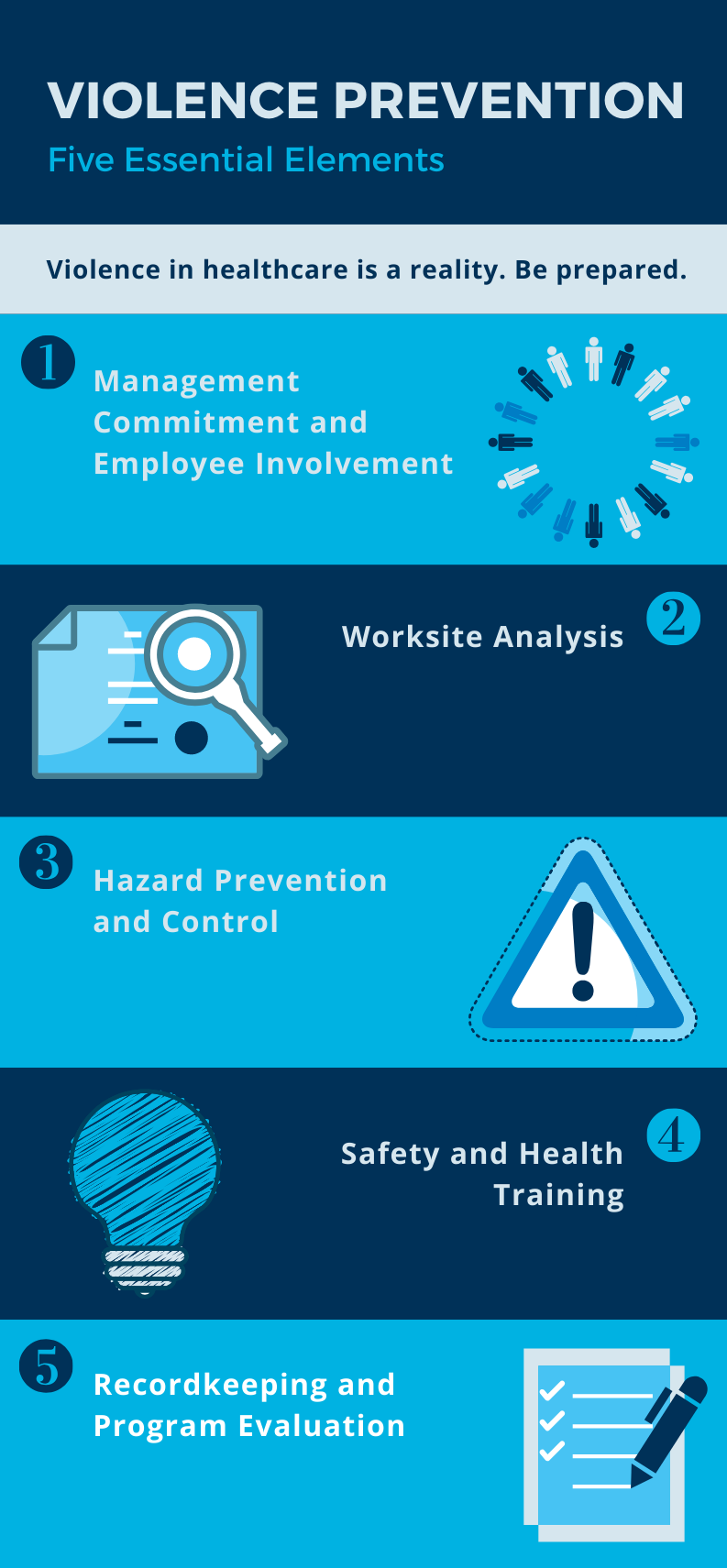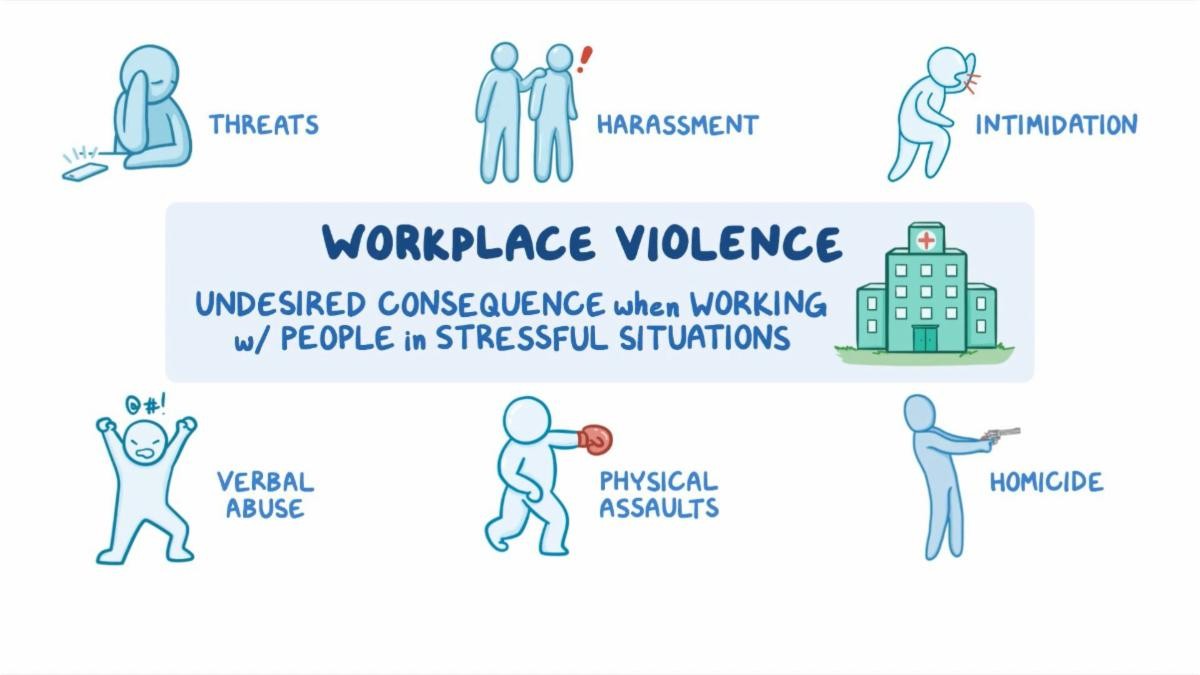Comprehending Legal Needs for California Workplace Violence Prevention Programs
Comprehending Legal Needs for California Workplace Violence Prevention Programs
Blog Article
Examining the Influence of Office Society on the Success of Violence Avoidance Initiatives and Worker Wellness
The intersection of workplace culture, violence avoidance initiatives, and staff member wellness warrants cautious assessment, as these aspects collectively influence business success. A society that focuses on open interaction and emotional safety and security can encourage employees to identify and report prospective risks, consequently cultivating a setting conducive to both mental wellness and effective violence prevention strategies. Nevertheless, the subtleties of exactly how these aspects interact remain multifaceted and intricate. Recognizing the specific mechanisms at play can expose important insights that might notify future efforts and drive meaningful adjustment within organizations. What hidden dynamics could be influencing these end results?
Understanding Office Culture
Regularly, workplace society offers as the foundation for employee communications and general business habits. It includes the shared worths, ideas, and practices that shape the setting in which staff members run. A favorable work environment culture fosters collaboration, respect, and open communication, while a negative culture may reproduce tension, distrust, and hostility. Comprehending workplace society is important for companies aiming to execute efficient violence prevention methods.

Organizations should analyze their present work environment culture to identify locations for enhancement. This assessment can entail studies, focus teams, or individually discussions. By recognizing the cultural characteristics at play, organizations can implement targeted treatments that promote a much safer and more considerate workplace, inevitably lowering the threat of violence in the office.
Duty of Staff Member Health
A favorable work environment society not only influences business behavior yet also significantly effects employee wellness. When staff members feel valued and valued, their general job satisfaction rises, causing enhanced psychological and mental health. This, in turn, promotes a feeling of belonging and loyalty, which is important for lasting interaction and productivity.
Moreover, a supportive social atmosphere advertises open communication, allowing staff members to seek and reveal concerns assistance without worry of stigma. This visibility is critical in resolving issues connected to anxiety, burnout, and interpersonal conflicts, which can detrimentally affect both individual well-being and business harmony.
Additionally, companies that focus on employee wellness frequently see minimized absence and turnover prices. Healthy employees are much more durable and much better equipped to take care of office difficulties, adding to an extra secure and efficient labor force.
Investing in employee wellness through efforts such as health cares, mental health resources, and versatile functioning arrangements can develop a positive feedback loop, improving both specific fulfillment and collective organizational success (california workplace violence prevention). Ultimately, focusing on employee wellness is not simply a moral imperative; it is a critical approach that profits the entire organization
Physical Violence Avoidance Methods
Applying efficient violence prevention strategies is essential for maintaining a healthy and balanced and risk-free workplace atmosphere. Organizations has to take on a thorough strategy that consists of policy development, worker training, and positive interaction. Establishing clear office violence policies is the primary step, making certain that all staff members recognize appropriate habits and the effects of violations.
Educating programs need to be made to educate workers concerning acknowledging indication of prospective physical violence, problem resolution techniques, and emergency situation action procedures. Normal web drills and simulations can boost readiness, get more fostering a culture of recognition and responsibility.
Moreover, cultivating open communication networks urges employees to report problems without worry of revenge. This can be helped with via anonymous coverage systems or normal responses sessions. Additionally, advertising a supportive office society that values regard and inclusivity can substantially reduce the risk of physical violence.
Organizations must also involve in regular assessments of their workplace culture and physical violence prevention strategies, adjusting them to evolving needs. By prioritizing these techniques, business not only secure their staff members yet also improve general health, inevitably adding to a much more productive workplace.
Measuring Cultural Impact
Measuring the impact of workplace society on physical violence avoidance initiatives is essential for recognizing the performance of existing approaches and recognizing locations for renovation - california workplace violence prevention. To attain this, companies need to utilize a diverse method that integrates qualitative and measurable methods. Analyses and surveys can collect information on worker assumptions of workplace inclusivity, support, and safety systems, while occurrence records give concrete proof of violence incidents and their context within the organizational culture
Furthermore, focus teams and meetings can reveal deeper insights into employees' mindsets, experiences, and ideas bordering physical violence avoidance initiatives. Examining this qualitative data helps organizations to pinpoint social toughness and weak points that may either help with or hinder efficient prevention strategies. Benchmarking against market criteria allows for relative analysis, aiding organizations assess their performance family member to peers.

Creating Supportive Environments
Frequently promoting an encouraging atmosphere within the work environment is vital for reliable violence prevention. Such atmospheres equip workers to interact openly concerning their experiences and worries, therefore recognizing potential problems prior to they intensify. A society of assistance improves trust fund amongst staff member, urging cooperation and positive problem-solving.
To create why not find out more a supportive atmosphere, organizations need to prioritize training programs that focus on conflict resolution, emotional intelligence, and active listening. These skills outfit workers to manage social relationships constructively, lowering the probability of misconceptions that might result in physical violence - california workplace violence prevention. Furthermore, implementing mentorship programs can give staff members with assistance and reassurance, adding to their general wellness
Leadership plays a vital function fit a supportive workplace society. By modeling compassionate actions and showing a commitment to worker welfare, leaders set a tone that urges others to do the same. Normal feedback systems, such as confidential studies, can also help gauge worker belief and highlight locations for renovation.
Eventually, a helpful environment not only minimizes the danger of violence yet likewise improves employee spirits, job fulfillment, and productivity, enhancing the organization's dedication to fostering a safe and growing office.
Final Thought
A positive office culture significantly influences both violence prevention initiatives and worker well-being. By fostering open communication and motivating the coverage of concerns, organizations can boost psychological health and wellness and task contentment among staff members. A helpful society enhances the performance of violence avoidance techniques by advertising the prompt acknowledgment and attending to of caution signs. Ultimately, growing such an environment offers as a vital structure for successful treatments and adds to the general success of the organization.
The crossway of workplace culture, violence avoidance initiatives, and employee wellness warrants mindful evaluation, as these components collectively influence business success. A society that focuses on open interaction and mental safety and security can empower employees to recognize and report prospective threats, consequently fostering an atmosphere favorable to both psychological wellness and reliable physical violence prevention techniques.A favorable office culture not just affects business behavior yet additionally dramatically impacts staff member health. Surveys and assessments can gather information on employee perceptions of office security, inclusivity, and assistance systems, while incident reports provide concrete proof of violence incidents and their context within the organizational society.
A positive workplace society significantly affects both physical violence avoidance initiatives and worker wellness.
Report this page